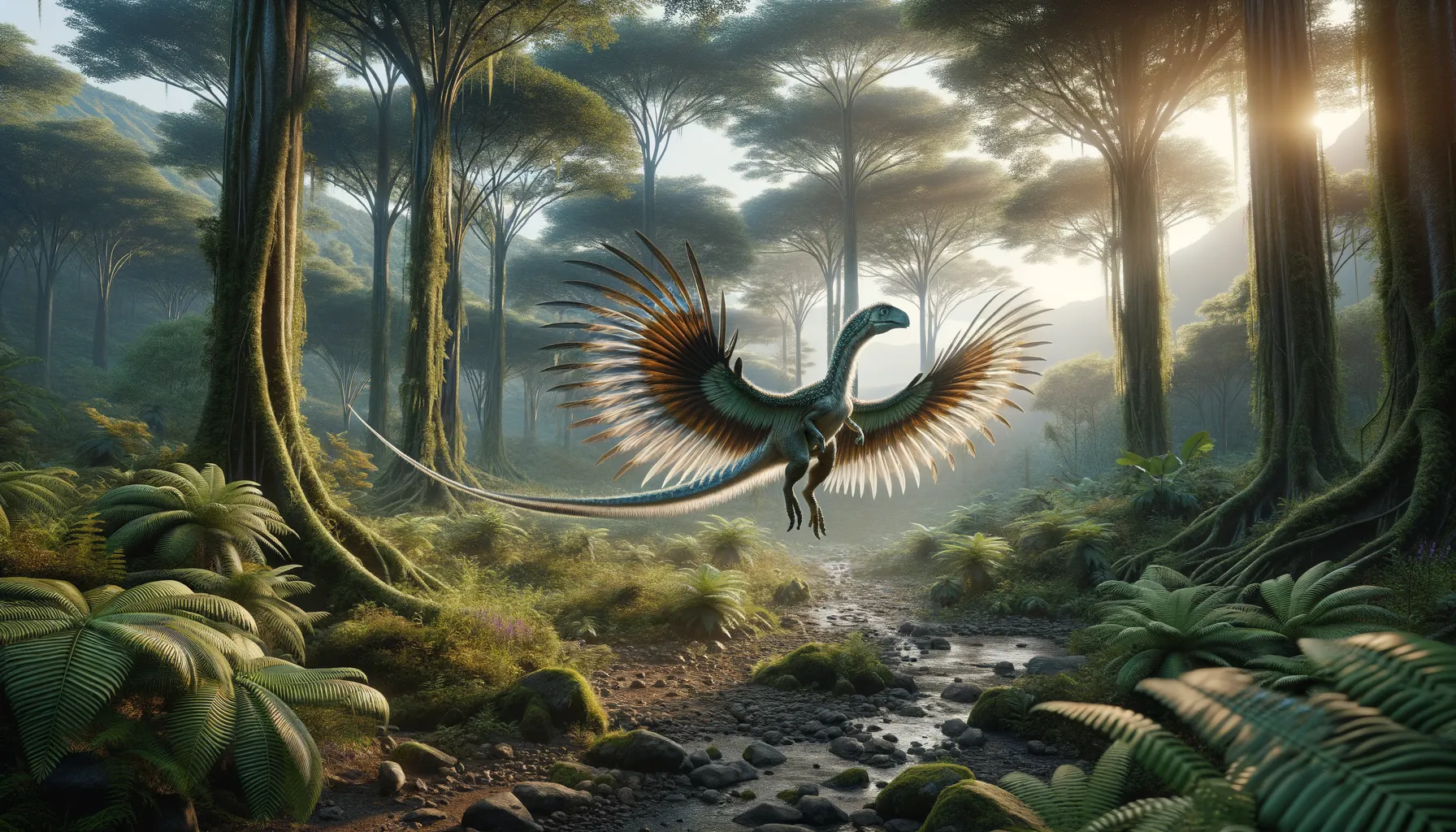
Changyuraptor
The feathered flyer of the ancient skies.
Period
Cretaceous
Length
Roughly 1.3 meters long.
Height
About 0.5 meters tall.
Weight
Approximately 4 kilograms.
Changyuraptor was a remarkable, feathered dinosaur from the Cretaceous period, known for its extraordinary tail feathers, which measured around 0.3 meters long. This dinosaur exhibited adaptations for flight, resembling modern birds more than its dinosaurian cousins. Living in what is now China, Changyuraptor thrived in a forested environment, evading predators with its impressive aerial maneuvers. Its discovery has provided vital insights into the evolution of flight among dinosaurs and their modern descendants.
Diet
Changyuraptor was a carnivore, feeding on small prey such as mammals, birds, and possibly fish. Its diet suggests it hunted for food both on the ground and from the air, using its flight abilities to catch or ambush prey.
Hunting
Its hunting behavior was likely opportunistic, taking advantage of its flying skill to pounce on unsuspecting prey. Changyuraptor might have used its claws and sharp teeth to catch and subdue small animals.
Environmental challenges
Living in the Cretaceous period, Changyuraptor faced predators, competition for food, and climate variations. It had to be wary of larger dinosaurian predators in the region. Seasonal changes might have influenced the availability of prey, requiring adaptive hunting strategies.
Speed
Agile in the air, capable of swift flight.
Lifespan
Estimated at around 10 to 15 years.
First discovery
Unearthed in Liaoning province, northeastern China.
Fun Facts
- Changyuraptor was a feathered dinosaur that lived during the Early Cretaceous period about 125 million years ago.
- It belonged to the group of dinosaurs known as microraptors, which were small, bird-like dinosaurs with long feathers.
- What makes Changyuraptor unique is its four-winged appearance, as it had feathers not only on its arms but also on its legs, helping it glide through the air.
- The name Changyuraptor means 'long-feathered robber,' highlighting its most distinctive characteristic—its beautiful, long tail feathers.
- Changyuraptor was about the size of a turkey, but its feathered tail was special as it helped it with flight control.
- This dinosaur was discovered in what is now China, in an area known for preserving fossils of feathered dinosaurs.
- Changyuraptor adds to the evidence that some dinosaurs were capable of flight, bridging the gap between dinosaurs and today's birds.
Growth and Development
Changyuraptor hatched from eggs, growing relatively quickly to reach maturity. Its feathers developed fully as it matured, which was crucial for its flight capability. This rapid growth would have been necessary to avoid predation.
Habitat
Changyuraptor inhabited forested regions with dense foliage, likely providing both cover and hunting grounds. These environments were teeming with diverse life, offering various prey. The trees may have also served as nesting sites or perches.
Interaction with other species
Changyuraptor likely interacted with other small dinosaur species and ancient birds in its ecosystem. It may have competed with these species for similar food resources. Predatory and competitive interactions would have driven its evolutionary adaptations.
Natural lifespan
Changyuraptor lived naturally for about 10 to 15 years.
Reproduction
Laying eggs in secure nests, Changyuraptor invested in parental care to some extent. This dinosaur likely relied on environmental conditions like temperature and habitat features to ensure the best conditions for its offspring's survival.
Social behaviour
While details on its social behavior are scarce, Changyuraptor may have lived in small groups or pairs, especially during breeding seasons. Cooperative hunting or nest defense could have been part of its social interactions, enhancing survival rates.
Fossil locations
The primary fossils of Changyuraptor have been found in the Jiufotang Formation in northeastern China. These fossils are remarkably well-preserved, providing insights into its morphology and potential coloration patterns.
